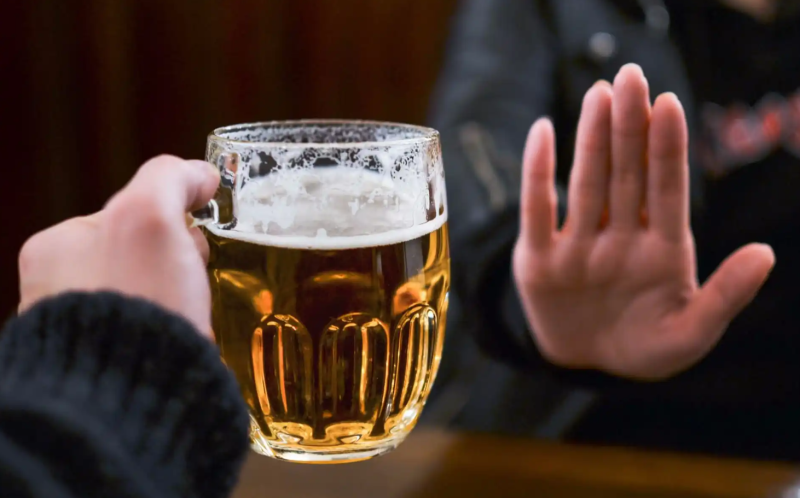When white feces appear, we worry, and the reality is that there are reasons to do so. In this article, we will tell you what their causes are, what they consist of, and how they are treated.
Feces provide information about the condition of our intestines and digestive tract. A change in its color can be an alert sign for the presence of some pathology or disease. For example, white stools are a clear sign of a problem in the body.
Normally, feces vary in shades of brown, green, and black. Now, in case they appear white or pale, what should we do?
 The cause of this disease is excessive alcohol consumption.
Symptoms are ascites, fatigue, edema, hepatic encephalopathy, and jaundice. Hepatitis is one of the causes that give rise to white stools, and both alcoholic and viral can result in cirrhosis.
The cause of this disease is excessive alcohol consumption.
Symptoms are ascites, fatigue, edema, hepatic encephalopathy, and jaundice. Hepatitis is one of the causes that give rise to white stools, and both alcoholic and viral can result in cirrhosis.
 Some types of cancer can cause light-colored or pale stools accompanied by fatigue.
This can also cause fatigue, as food is not digested properly, and nutrients cannot be absorbed. All of this results in possible malnutrition.
Some types of cancer can cause light-colored or pale stools accompanied by fatigue.
This can also cause fatigue, as food is not digested properly, and nutrients cannot be absorbed. All of this results in possible malnutrition.
 It is always important to watch children’s stools, as these can reveal health problems. White stools—or white diarrhea—are common in little ones; sometimes, it is due to milk or its derivatives that do not suit them.
When we have children, we must always be informed about the causes of white feces and the most appropriate treatment to provide them. Of course, the consultation with the doctor must be as soon as possible.
It is always important to watch children’s stools, as these can reveal health problems. White stools—or white diarrhea—are common in little ones; sometimes, it is due to milk or its derivatives that do not suit them.
When we have children, we must always be informed about the causes of white feces and the most appropriate treatment to provide them. Of course, the consultation with the doctor must be as soon as possible.
Contents
White or pale stools
When the stool is white or clay-colored, it indicates that we have a problem in the biliary system, which includes the pancreas, liver, and gallbladder. Bile salts secreted by the liver give the brown color of the feces. When they are white, it may be due to an infection in the liver, which decreases bile production. Or perhaps there has been a blockage in the bile ducts. Because of this, the digestive system is unable to absorb fats correctly. There are also light-colored (yellow to gray) and greasy stools. This condition is called ‘acholic stools’ or ‘scholia.’ It is common to have a problem at a certain moment. Over time, changes occur that can be simple and temporary or, on the contrary, alarming and impressive.Possible Causes of White Stools
White feces can be the consequence of various issues, from the consumption of certain medications to bad lifestyle habits or specific diseases.1. Medications
The consumption of certain medicines causes feces to turn white in people. An example is the antibiotics used to treat infections such as tuberculosis or intestinal ailments such as diarrhea. On the other hand, anti-inflammatories and oral contraceptives can also cause white stools. Similarly, anabolic steroids can cause drug-induced hepatitis in addition to acholia. Barium and some antacids may also be responsible for the symptoms. In these cases, the white stools usually disappear within a few weeks after the trigger medication is stopped.2. Hepatitis
Hepatitis is liver inflammation caused by the hepatitis A, B, or C virus (the latter being the most dangerous as it can be fatal). One of the symptoms of hepatitis is pale or clay-colored stools. The liver malfunction causes this signal. Some studies state that acholia is seen more frequently in the first week of the disease. In addition, hepatitis is accompanied by jaundice, fever, dark urine or choluria, and intense itching.3. Alcoholic hepatitis
 The cause of this disease is excessive alcohol consumption.
Symptoms are ascites, fatigue, edema, hepatic encephalopathy, and jaundice. Hepatitis is one of the causes that give rise to white stools, and both alcoholic and viral can result in cirrhosis.
The cause of this disease is excessive alcohol consumption.
Symptoms are ascites, fatigue, edema, hepatic encephalopathy, and jaundice. Hepatitis is one of the causes that give rise to white stools, and both alcoholic and viral can result in cirrhosis.
4. Biliary cirrhosis
Biliary cirrhosis is a chronic and irreversible liver disease in its terminal phase. It occurs when the cells of the bile ducts are destroyed; this causes irritation and inflammation of the liver’s bile ducts. For this reason, bile flow is blocked, and liver cells are damaged. Later, scarring called cirrhosis occurs. One of the many effects of cirrhosis is that the stools turn white.5. Cancer
 Some types of cancer can cause light-colored or pale stools accompanied by fatigue.
This can also cause fatigue, as food is not digested properly, and nutrients cannot be absorbed. All of this results in possible malnutrition.
Some types of cancer can cause light-colored or pale stools accompanied by fatigue.
This can also cause fatigue, as food is not digested properly, and nutrients cannot be absorbed. All of this results in possible malnutrition.
6. Gallstones
Gallstones are solidified debris in the gallbladder that obstructs the flow of bile. They are formed from cholesterol or hardened bilirubin. When gallstones are large, they sometimes block the bile ducts, which release bile into the intestines; this abnormality results in the stools becoming pale in color. Likewise, if their size is considerable and they do not disappear with medication, surgical intervention must be performed to remove them.7. Primary sclerosing cholangitis
Primary sclerosing cholangitis is when the bile ducts become inflamed or scar tissue forms. This condition causes a decompensation of the bile flow, which does not reach the stool correctly and causes its lack of color. However, this disease can be treated by medication or surgical intervention.8. Jaundice
Jaundice occurs due to the immaturity of the liver’s biochemical processes that transform bilirubin. It is revealed in the yellowish coloration of the skin and mucous membranes; it can be accompanied by choluria when the urine is dark due to bilirubin and white feces. It is very common in premature infants and lasts about two weeks after delivery.9. Cholestasis
Bile flow slows or stops due to liver infection, gallstones, or cancer in this condition. Itching appears in dark urine and white stools. To treat cholestasis, the underlying infection must be addressed, which implies a suitable diet, medication, and, in some cases, surgical intervention.10. Cysts in the bile ducts
Cysts are benign neoplasms with a fluid center that can appear anywhere in the body. These tumors can cause white feces when they are located in the bile ducts, obstructing the flow of bile. The treatment for this condition is surgical removal of the cyst. Fortunately, it is a quick procedure but carries certain associated risks.11. Malformations in the biliary tree
Congenital malformations are structural or anatomical alterations present from birth and can affect any organ. In this sense, a malformation of the bile ducts can occur, causing the appearance of white feces in newborns.Diagnosis and treatment of white stools
The appearance of white feces is a serious condition that should be quickly consulted with a doctor. The professional must indicate adequate treatment when the causes are discovered and diagnosed. The tests that must be carried out to have an accurate diagnosis by the doctor are the following:- Blood analysis: this way, observing any anomaly in the values will be possible.
- CT scan: This diagnostic test generates an image of the inside of the body.
- Endoscopic retrograde cholangiopancreatography (ERCP): This procedure combines upper endoscopy with x-rays to obtain detailed bile ducts and pancreas images.
- Abdominal ultrasound is a test to create an image of the organs and verify that everything is in order and its place.
- Liver function tests.
- Surgery: in cases of extreme necessity, it is performed to find defects in the biliary tract.
White stools in children: causes and treatment
 It is always important to watch children’s stools, as these can reveal health problems. White stools—or white diarrhea—are common in little ones; sometimes, it is due to milk or its derivatives that do not suit them.
When we have children, we must always be informed about the causes of white feces and the most appropriate treatment to provide them. Of course, the consultation with the doctor must be as soon as possible.
It is always important to watch children’s stools, as these can reveal health problems. White stools—or white diarrhea—are common in little ones; sometimes, it is due to milk or its derivatives that do not suit them.
When we have children, we must always be informed about the causes of white feces and the most appropriate treatment to provide them. Of course, the consultation with the doctor must be as soon as possible.
Causes of white stools in Children
Any of these factors can trigger this problem:- Hepatitis or other liver problems.
- Consumption of cold foods.
- Quality, quantity, and proportion of food eaten.
- Malabsorption of food, the product of a tiny parasite that harms the intestine.
- cholestasis _